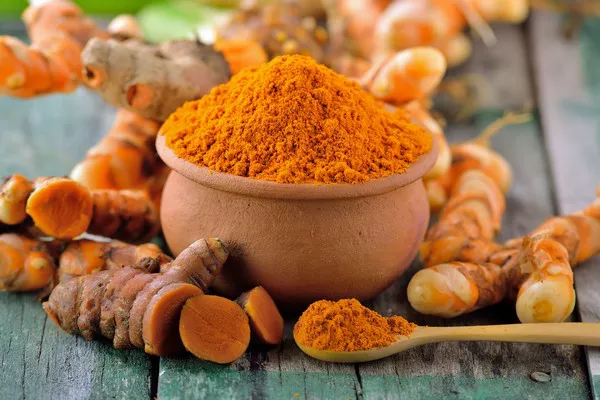For centuries, traditional healing practices have relied on the power of plants to treat various ailments and promote overall well-being. In the modern era, scientific research has validated the medicinal properties of numerous plants, leading to the development of pharmaceutical drugs and the continued use of herbal remedies. In this article, we will delve into the world of medicinal plants, exploring the ten most powerful medicinal plant species that have proven therapeutic benefits.
10 Most Powerful Medicinal Plants on Earth
1. Turmeric (Curcuma longa)
Known for its vibrant golden hue and distinct flavor, turmeric has been a staple in traditional medicine for centuries. The active compound responsible for its medicinal properties is curcumin, a potent anti-inflammatory and antioxidant agent. Turmeric has demonstrated efficacy in alleviating symptoms of arthritis, promoting heart health, and even showing potential in cancer prevention. Incorporating turmeric into culinary dishes or consuming it as a supplement can harness its medicinal benefits.
2. Aloe Vera (Aloe barbadensis miller)
Aloe Vera, commonly known for its soothing properties for skin burns and wounds, is a versatile medicinal plant. The gel inside its succulent leaves contains compounds with anti-inflammatory and antibacterial properties. Aloe Vera is used topically to accelerate wound healing, treat skin conditions such as psoriasis and dermatitis, and provide relief from sunburns. Additionally, consuming Aloe Vera juice may aid in digestive health and boost the immune system.
3. Ginger (Zingiber officinale)
Ginger, revered for its spicy flavor and aromatic qualities, is more than just a culinary spice. Its bioactive compound, gingerol, possesses anti-inflammatory and antioxidant properties. Ginger has been traditionally used to alleviate nausea, aid digestion, and reduce muscle pain. Research suggests its potential in managing chronic inflammatory conditions like osteoarthritis and rheumatoid arthritis. Whether consumed fresh, as a tea, or in supplement form, ginger can be a powerful addition to one’s health regimen.
4. Garlic (Allium sativum)
Beyond its culinary uses, garlic has a long history of medicinal applications. Allicin, a sulfur-containing compound found in garlic, is responsible for its antibacterial and antifungal properties. Garlic has been associated with cardiovascular benefits, including the reduction of blood pressure and cholesterol levels. Additionally, its immune-boosting properties make it a valuable ally in preventing and treating common illnesses. Incorporating raw or cooked garlic into your diet can provide a range of health benefits.
5. Echinacea (Echinacea purpurea)
Echinacea, a native North American plant, has been widely used in traditional medicine to boost the immune system and treat respiratory infections. Its active compounds, including flavonoids and polysaccharides, contribute to its immune-stimulating effects. Echinacea supplements, extracts, or teas are commonly consumed to prevent or reduce the severity of colds and flu. While research on its effectiveness is ongoing, many individuals turn to echinacea as a natural remedy during the cold and flu season.
6. Ginseng (Panax ginseng)
Ginseng, particularly Panax ginseng, is a revered herb in traditional Chinese medicine known for its adaptogenic properties. Adaptogens help the body adapt to stress and restore balance. Ginsenosides, the active compounds in ginseng, contribute to its anti-inflammatory and antioxidant effects. Regular consumption of ginseng has been associated with improved energy levels, enhanced cognitive function, and potential benefits for managing diabetes. Ginseng supplements are available in various forms, including capsules, powders, and teas.
7. Lavender (Lavandula angustifolia)
Lavender, valued for its delightful fragrance, is more than just a pleasant scent – it has powerful medicinal properties. The essential oil derived from lavender contains compounds such as linalool and linalyl acetate, which have calming and anti-anxiety effects. Lavender is commonly used in aromatherapy to promote relaxation and improve sleep quality. Additionally, topical applications of lavender oil may help alleviate skin conditions such as eczema and reduce headaches.
8. Chamomile (Matricaria chamomilla)
Chamomile, renowned for its mild, apple-like scent, is a medicinal herb with diverse applications. The flowers of chamomile contain compounds like chamazulene and apigenin, known for their anti-inflammatory and antioxidant properties. Chamomile tea is a popular remedy for promoting relaxation and improving sleep quality. It is also used topically to soothe skin irritations and accelerate wound healing. The mild nature of chamomile makes it suitable for various age groups, including children.
9. Peppermint (Mentha piperita)
Peppermint, a hybrid mint species, is not only a refreshing flavor but also a potent medicinal herb. Its active compound, menthol, contributes to its analgesic and anti-inflammatory effects. Peppermint oil is commonly used to relieve symptoms of irritable bowel syndrome (IBS), including abdominal pain and bloating. Additionally, peppermint tea is known for its digestive benefits and ability to alleviate symptoms of headaches and migraines.
10. Ginkgo Biloba (Ginkgo biloba)
Ginkgo biloba, derived from the leaves of the ginkgo tree, is a powerful medicinal plant with a rich history in traditional Chinese medicine. The active compounds, flavonoids, and terpenoids, contribute to its antioxidant and anti-inflammatory effects. Ginkgo biloba is commonly used to enhance cognitive function, improve memory, and alleviate symptoms of conditions like age-related macular degeneration (AMD) and tinnitus. However, it is essential to consult with a healthcare professional before incorporating ginkgo biloba into your routine, especially if you are taking medications.
See Also: 10 Most Expensive Herbs
Conclusion
Nature’s pharmacy is abundant with powerful medicinal plants that offer a holistic approach to health and well-being. Whether used in traditional remedies or as supplements in modern healthcare, these plants provide a diverse array of therapeutic benefits. As we continue to explore the potential of medicinal plants, it is crucial to approach their use with an understanding of individual needs and consult healthcare professionals when necessary. By embracing the healing properties of these plants, we can integrate natural remedies into our lifestyles, fostering a balanced and sustainable approach to health.
You Might Be Interested In:


























